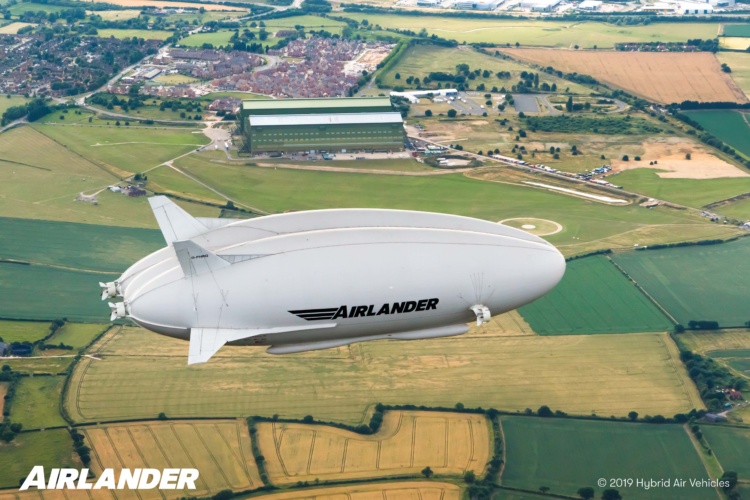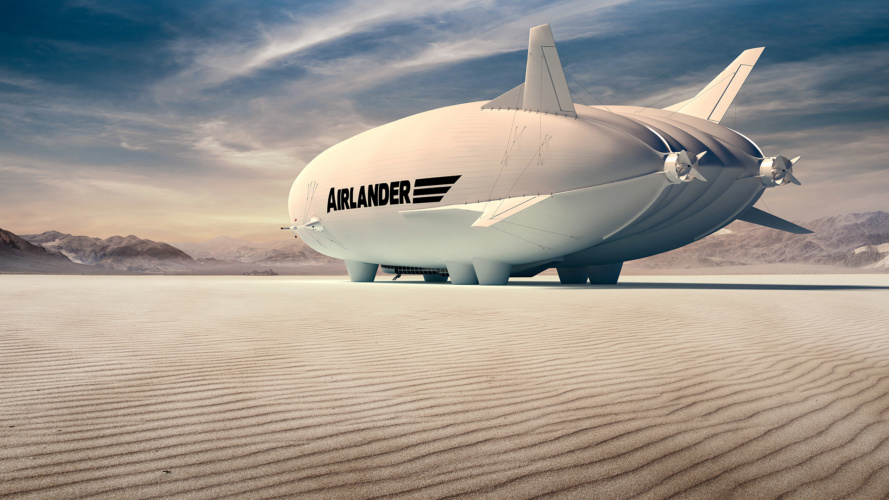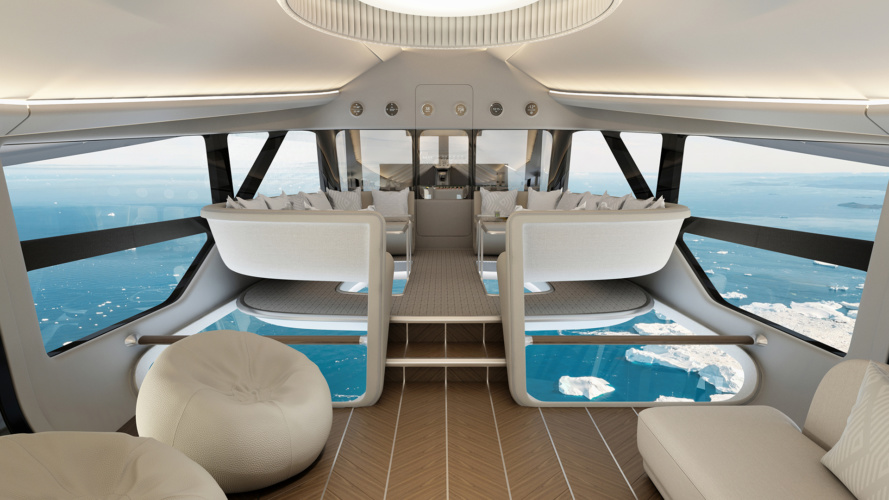
In November 2017 - following a series of increasingly ambitious and successful test flights - Airlander 10, the giant UK developed hybrid air vehicle attempting to breathe fresh life into the romance of lighter than air travel, experienced the kind of setback that will be depressingly familiar to aerospace pioneers throughout the ages.
Escaping its moorings at its base in Cardington, Bedfordshire, the giant 92 metre long aircraft performed an emergency deflation, crumpling to a heap on the grass of the iconic airfield and - with a depressing inevitability for those working on the project - prompting a flurry of headlines inviting unfair comparison with the great airship disasters of the past.
Now, just over three years on, and after a period out of the public eye spent refining and optimising its design, the company behind the technology - Bedfordshire-based Hybrid Air Vehicles - is once again poised to have a crack at ushering in the lighter than air transport revolution.
As previously reported by The Engineer, the company’s core technology was originally developed (in partnership with Northrop Grumman) as a reconnaissance platform for the US military’s Long Endurance Multi Intelligence Vehicle (LEMV) programme. When funding for the project was pulled, the company bought the prototype, returned it to the UK, and set about converting it for civilian use.
It slightly annoys me, here we are a hundred plus years down the track from the Titanic sinking and that doesn’t seem to have ruined the cruise liner business. But 90 years on from the Hindenburg, and people still bring it up
Mike Durham, Hybrid Air Vehicles
Whilst the resulting aircraft is superficially similar in appearance to the giant airships of the past, its developers prefer the term “lighter than air vehicle” and stress that it actually borrows technologies not just from airship design but also from fixed wing aircraft and helicopters.

Indeed, the vehicle flies using a combination of buoyant lift from the helium stored in the pressure stabilised hull, aerodynamic lift generated by the cambered shape of the hull, and vectored thrust from the engines positioned at each of its four corners.
Because the buoyant lift of the helium keeps the aircraft aloft it uses a fraction of the fuel of conventional aircraft and is therefore thought by many to represent a compelling option for an aerospace sector determined to dramatically reduce its emissions. “Even if we’re running on diesel or kerosene engines our carbon production per kilometre is about a quarter of a conventional aircraft,” said Hybrid Air Vehicles’ CTO Mike Durham. “That’s because the gas is keeping us up. We’ve only got to put energy in to push ourselves along, whereas for an aircraft it’s got to keep itself up as well as push itself along.”
Since winding up the initial flight test programme in 2018, the company has been poring over the data from these flights and refining and modifying its designs using a combination of simulation and advanced wind tunnel testing. According to Durham, this process has led to a production-ready design that - with a fair commercial wind - could be ferrying around paying customers by the middle of this decade.
Whilst a number of potential markets and applications are currently under consideration - ranging from freight transport to luxury tourism – the key area of excitement at the moment is around using the technology to transform regional mobility. “We’re not building an aircraft that is designed to go trans-Atlantic but for regional mobility where you’re looking at 500-600km tops, for example linking cities like Liverpool and Belfast,” said Durham.
For these kind of applications the aircraft has some key advantages. Not only does it represent a greener alternative to conventional flight, but its ability to take off from grassy fields or even the surface of lakes or rivers opens up the opportunity to vastly simplify ground operations, and put in place a service which - from a passenger perspective - is more akin to travelling on a train or ferry than a conventional aeroplane.

Alongside ground operations, another key area of activity is around enhancing the green credentials of the technology.
Whilst Airlander 10 - the firm’s market entry product - will be powered by four kerosene fuelled engines, the goal, said Durham, is to be fully electric within seven to eight years, using hydrogen fuel cell powered electric motors. The company is currently working alongside Collins Aerospace and the University of Nottingham (through the Aerospace Technology Institute (ATI) funded E-HAV1 project) - to develop a 500kW electric motor that will be used in its next-generation products.
As previously reported by The Engineer, there are currently a number of initiatives underway looking at hydrogen fuel cell powered flight (perhaps most notably the efforts of Cranfield based innovator ZeroAvia, which last year conducted the first commercial-scale hydrogen fuel cell powered flight). However, whilst many of these projects are making genuinely impressive strides, Durham believes that lighter than air vehicles are – in many respects - a more credible platform for the technology. “We don’t have to degrade our cabin space to go to hydrogen,” he said. “Whilst hydrogen is very good on an energy per kilogram basis, it’s not very volume efficient and that hurts aeroplanes whereas we can put significant sized hydrogen tanks up within the hull of our aircraft.”
Despite its promise, the use of hydrogen in airships still has negative connotations for some, and overcoming lingering misconceptions remains a key challenge. “It’s so much easier and safer in people’s minds to invest in incremental changes to the existing well understood thing,” he said. “It slightly annoys me, here we are a hundred plus years down the track from the Titanic sinking and that doesn’t seem to have ruined the cruise liner business. But 90 years on from the Hindenburg, and people still bring it up.”
Despite this, Durham - a thirty year veteran of the lighter than air sector - says that he’s more confident than he’s ever been that, thanks to a combination of improved technology and the growing momentum behind the aerospace sector’s low carbon push, the technology’s moment may finally have arrived. “We need to do something about the mess we’re making of the environment and it feels like lighter than air has to be a great candidate for it. If the world wants to continue flying it’s going to have to modify its behaviour with regards to the speed with which you get there.”





April 1886: the Brunkebergs tunnel
First ever example of a ground source heat pump?